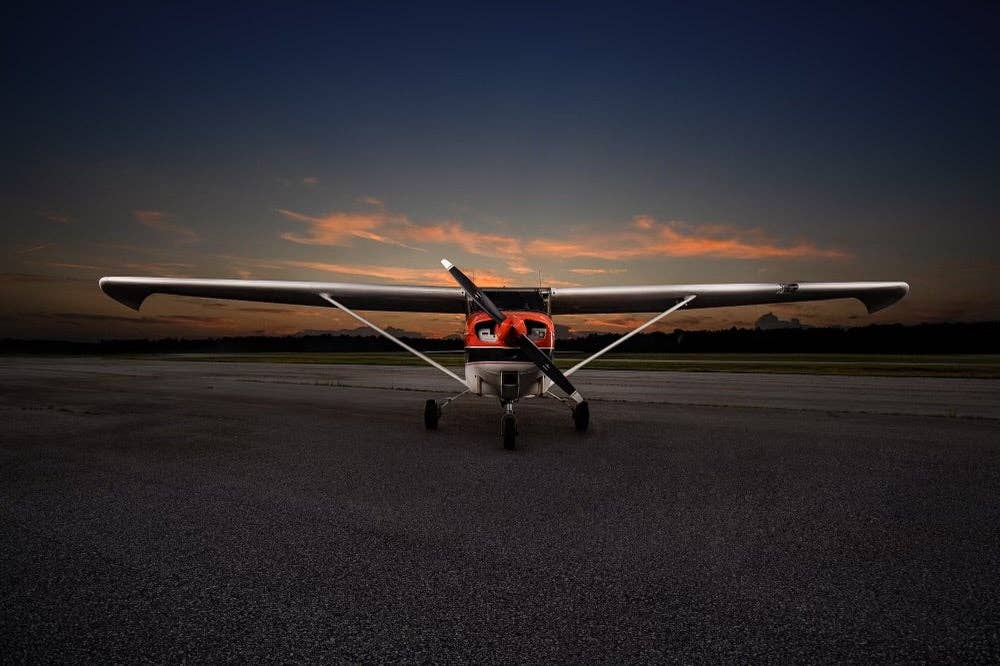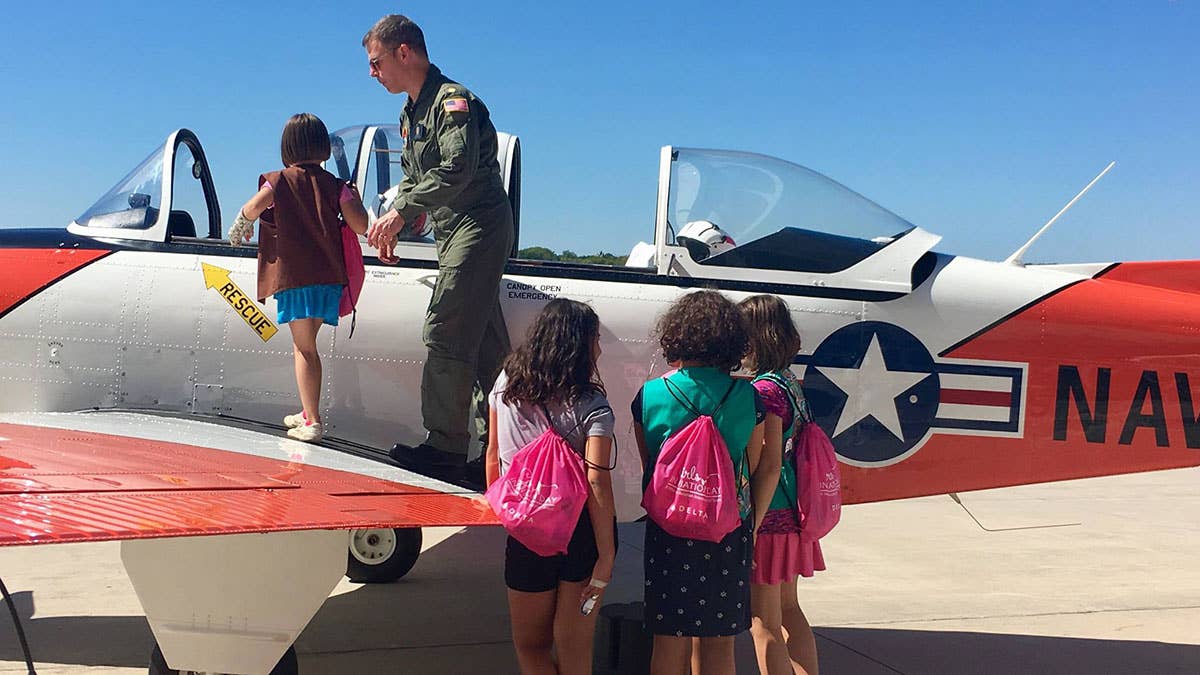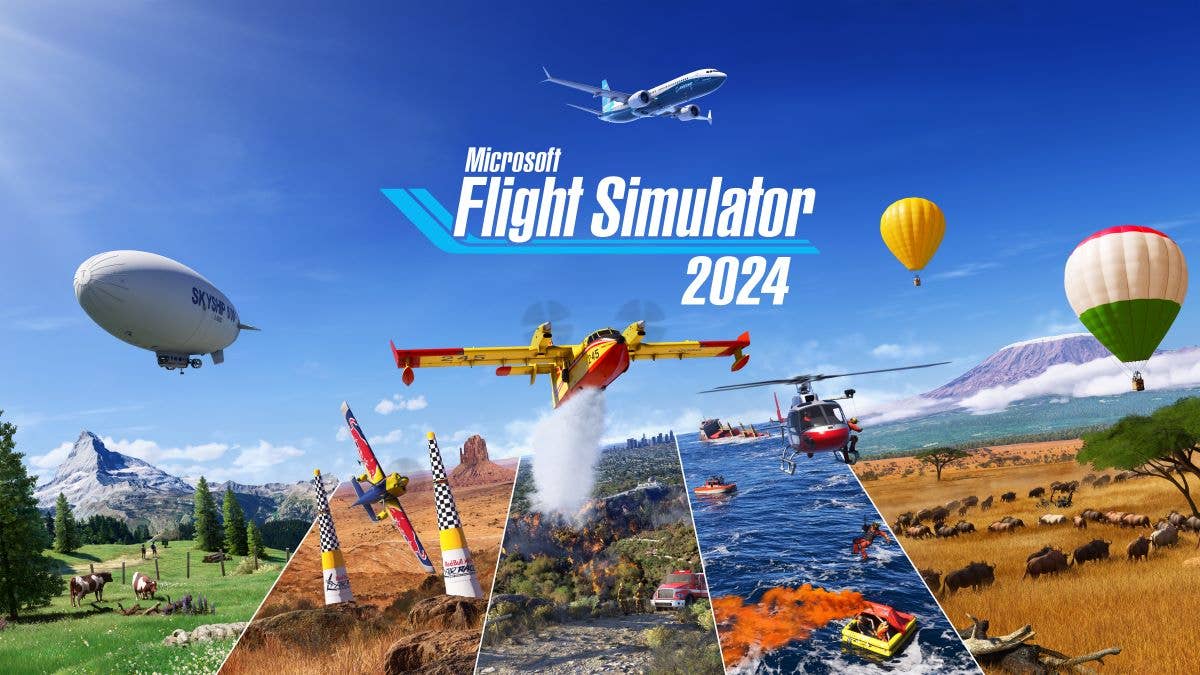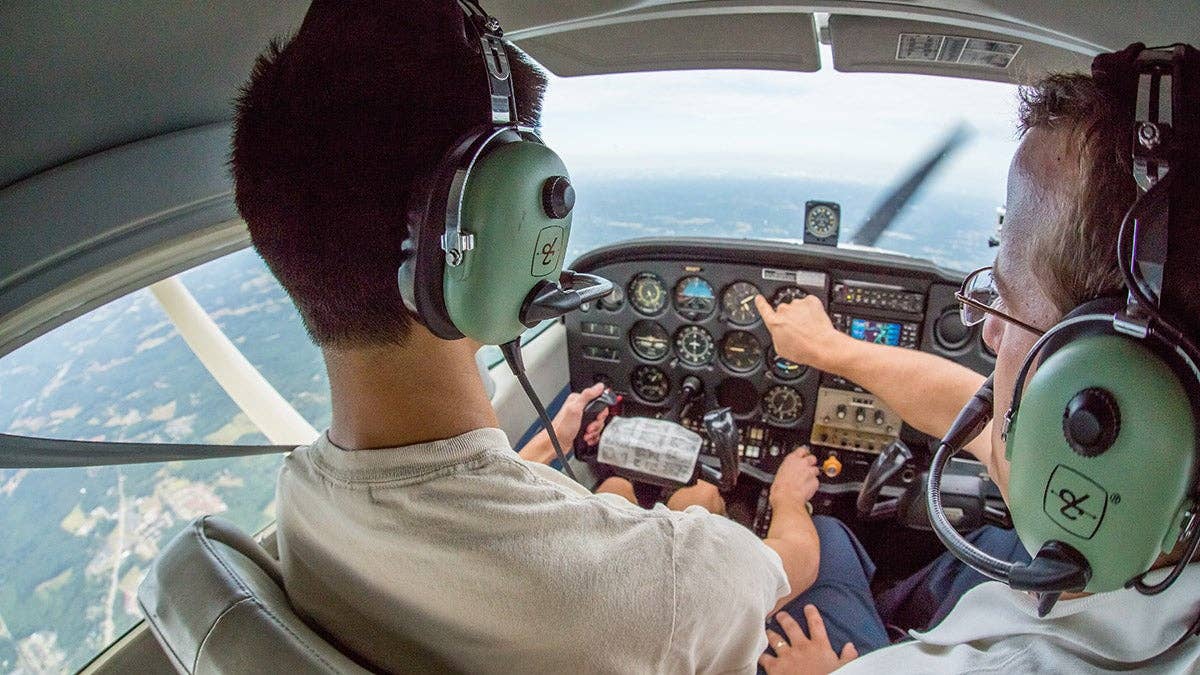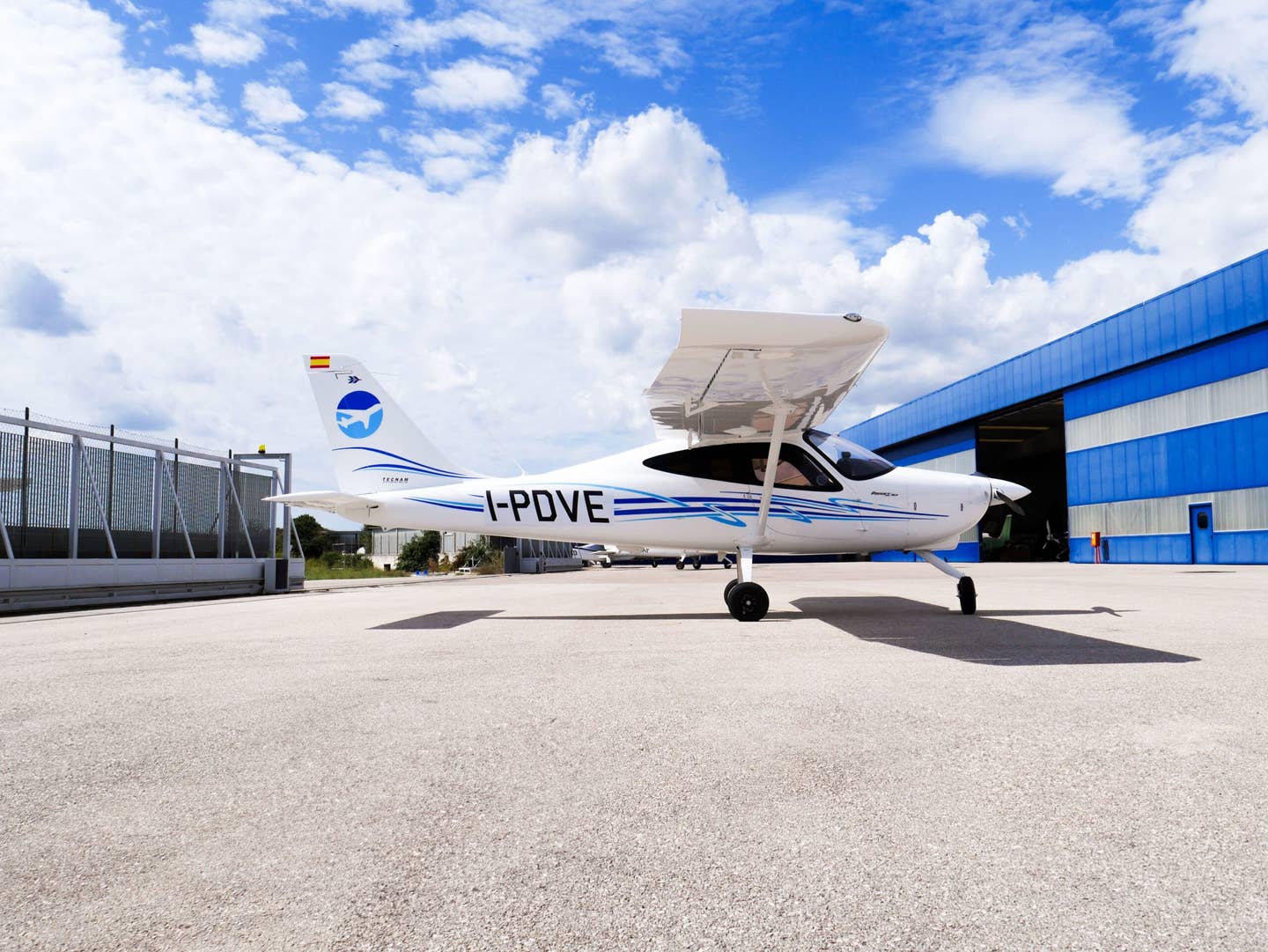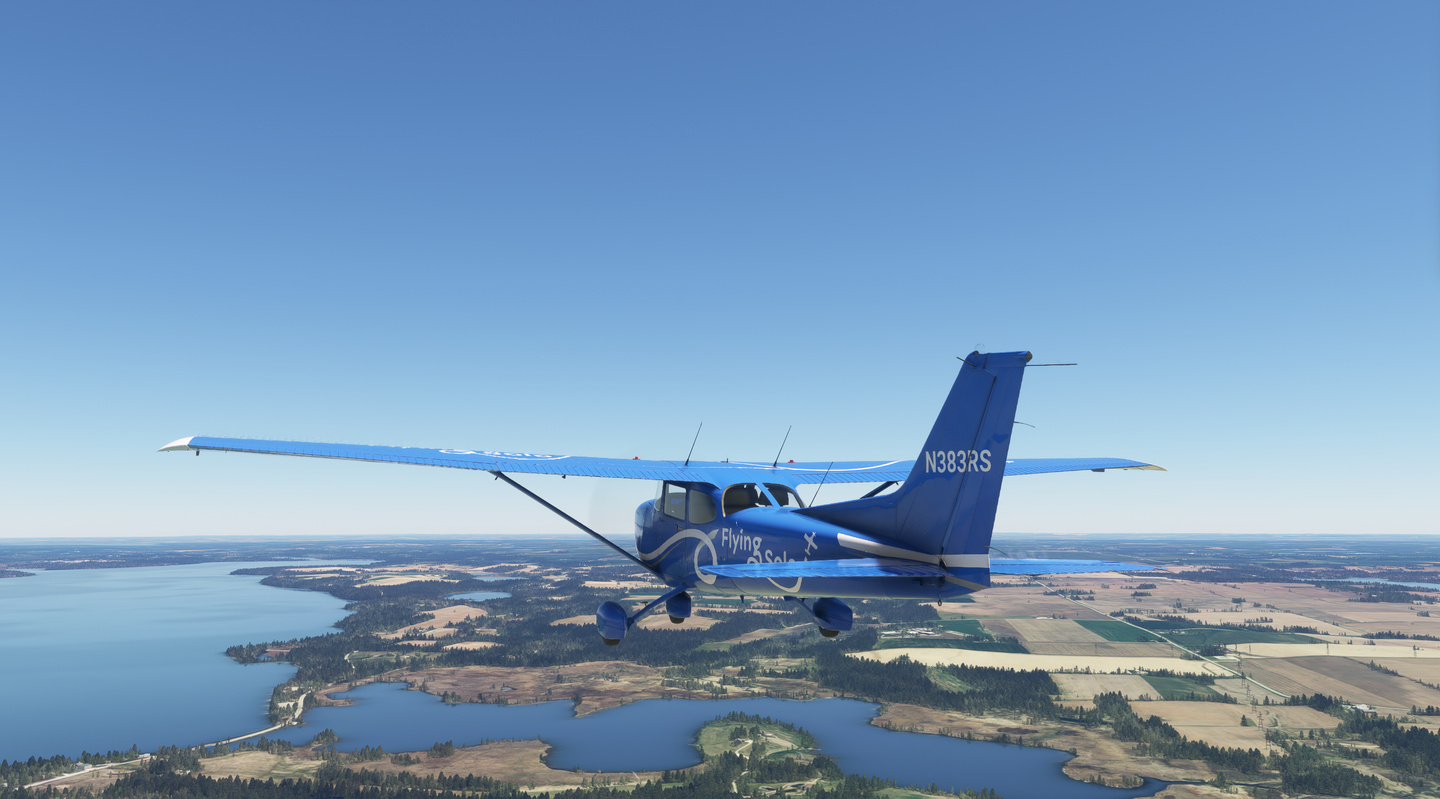Voyages of Discovery Can Be Money Well Spent
An introductory or discovery flight can offer a great experience for the student to assess whether flying is for them, and what training program will make the best fit.
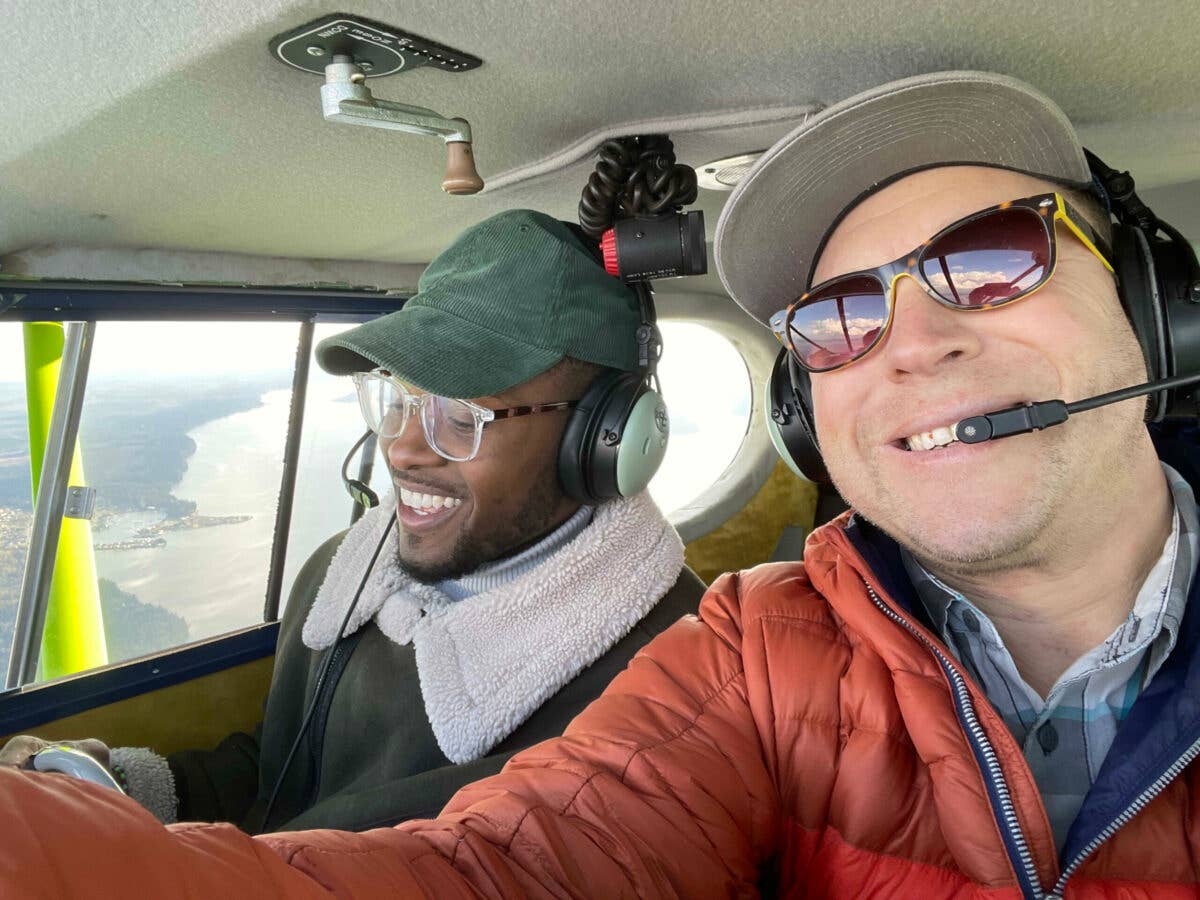
Olufemi Haynes, a flight attendant at the author’s airline, flies the author’s Stinson 108 on a discovery flight. [Sam Weigel]
One of the personally interesting aspects of this historic pilot hiring wave has been that, in my day job as a Boeing 737 captain, nearly every single week I encounter flight attendants who are commercial pilots, or are in flight training, or are considering taking the plunge.
This is a very welcome development that will do wonders to increase the diversity of our pilot corps, as well as help tear down lingering barriers between our pilot and flight attendant groups, an unfortunate aspect of our company culture. Management apparently agrees: Several years ago they created two accelerated hiring paths to the flight deck for our flight attendants, which has stirred immense interest among our cabin crew. The early participants are now at the qualification level where I’ll be flying with them soon, and I’m really looking forward to it.
When I encounter anyone who is interested in flying professionally, flight attendant or not, I often suggest that they first go get their private pilot certificate before making any big commitments. Flying, and especially at the professional level, isn’t for everyone. Not everyone will enjoy it, and not everyone is cut out for it. Too many people discover this only after quitting their job and putting a lot of money and time into professional flight training. In my opinion, the time to discover whether a flying career is right for you is during primary training. My airline apparently agrees because it made a private pilot certificate a prerequisite for our basic flight-attendant-to-flight-deck hiring path (the advanced path requires a commercial certificate).
Similarly, I often suggest that those who are interested in taking primary flight lessons first go on a discovery flight, or introductory flight lesson, to make sure it’s right for them. Or better yet, go on several discovery flights with multiple flight schools and instructors to gauge which is right for them. Most FBOs and flight schools offer 30-minute introductory lessons at a somewhat discounted rate, sometimes via a Groupon coupon. This has traditionally been intended to give the prospective learner a somewhat rosy picture of what piloting a small airplane is like, a quick hit of the good stuff to ‘get ‘’em hooked’ with none of the messy side effects. I have always thought, however, that students, instructors, and schools are better served by giving prospective aviators a realistic look at what learning to fly is like—and that they should treat the experience as an extended interview of a prospective instructor and flight school.
There is no standard format for a discovery flight. Every school, and in many cases each instructor, does it differently. Some conduct a preflight briefing; others do not. Some walk the student slowly through the preflight inspection; other instructors do it quickly themselves and get the student in the air ASAP. Some give the student significant instruction; others barely let the student touch the controls. Sometimes it varies based on the time available or by just how deeply a particular discovery flight (and perhaps instructor fee) has been discounted. When I was instructing, I knew a few CFIs who openly talked about discovery flights being a rare chance to manipulate the controls themselves for almost an entire flight. Based on recent conversations with discovery flight recipients, this still seems to be a common mindset. That’s a pity.
- READ MORE: That First Flight
I’m no longer an active flight instructor, but I make a regular point of taking nonpilots flying in my Stinson 108. Whenever they show the slightest interest in learning to fly, I conduct their flight in the same fashion as the introductory flight lesson I was afforded at age 13, and the way I tried to perform discovery flights when I was an active CFI. This includes a ground briefing to explain what we’ll be doing, what they should watch out for, and what they can expect to learn and accomplish. Then I’ll spend a good 15 minutes talking them through the preflight inspection, getting their hands on fuel sumps, brake calipers, the oil dipstick, and cowling fasteners. Finally, we go flying for 30 to 60 minutes. I have them follow me on the controls during takeoff, then I level off and trim out and get right into the business of teaching the basics of aircraft control. This includes coordinated turns, which can be tricky in my Stinson, but everyone seems to get it after a few minutes. I fly a circular course, so we can get back home quickly if the student starts looking green. Every 10 minutes or so, I take the controls to show a scenic point of interest, giving the student a short break in concentration and an example to emulate. Our loop always ends over bustling Lake Union, for a spectacular view of downtown Seattle with the majestic backdrop of Mount Rainier.
I understand this is an idealized introductory flight lesson, one given at my leisure during ample free time, and not necessarily always realistic given the demands of instructor and training fleet scheduling. Not to mention the economic considerations of offering a discovery flight cheap enough to attract casual punters. For this reason, if you’re a prospective student, I would avoid those cheap, advertised 20-to-30-minute discovery flights, which are likely to involve little instruction and insight into your prospective school or instructor. Instead, I would request a two-hour block of instructor time with a full 45 minutes of flight time. This will give you the opportunity to make a thorough evaluation.
When you show up 15 minutes before your scheduled start time, how is the atmosphere of the place? Harried and chaotic or organized and calm? Does somebody greet you promptly and appear to know what you’re there for? Your instructor may well be finishing a lesson with another student. How do they handle the transition? Is there a quiet briefing area, and do you notice other instructors briefing their students before their flights? Does your instructor explain what you’re going to do without resorting to jargon you don’t know? When you go out to the airplane, does your instructor seem rushed? Do they teach you the preflight or at least talk through what they’re looking at? Is the airplane beat up with apparently inoperative equipment?
While the instructor is taxiing out and taking off, do they explain what they’re doing? After takeoff, how soon do they give you control, and how do they handle the transition to active instruction? Rest assured, your aircraft control will be pretty rough at first, possibly enough to make most pilots squirm with unease. How does your instructor react? This is an excellent chance to gauge their patience. Are they paying attention to what you’re doing and how you’re doing it? Are they adjusting their instruction when you don’t understand something? Do they seem in a hurry to take the controls or to return to base? After the flight, do they give you a debriefing and a chance to ask questions? I’d suggest a frank discussion about the instructor’s experience, their students’ check ride pass rate, their career goals going forward, and the chances of them sticking around the flight school during your planned time frame for primary training.
Let’s say you do three of these introductory lessons at three flight schools with three instructors. At the end, you should have about 2.3 hours logged (which certainly counts towards PPL requirements), be getting pretty good at basic aircraft control, and have a good idea of the differences between flight schools and instructors. Hopefully, you’ve found one that you mesh with well. When you consider the considerable cost of ineffective instruction or having to switch schools or instructors midstream, I’d say these 2.3 hours of discovery flights should be money well spent.

Subscribe to Our Newsletter
Get the latest FLYING stories delivered directly to your inbox

